This article deals with the system of transport in Belgrade, both public and private.
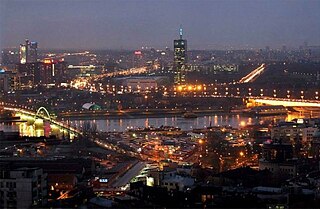
New Belgrade is a municipality of the city of Belgrade. It was a planned city and now is the central business district of Serbia and South East Europe. Construction began in 1948 in a previously uninhabited area on the left bank of the Sava river, opposite old Belgrade. In recent years [when?], it has become the central business district of Belgrade and its fastest developing area, with many businesses moving to the new part of the city, due to more modern infrastructure and larger available space. With 209,763 inhabitants, it is the second most populous municipality of Serbia after Novi Sad.

Grocka or Grocka na Dunavu is a municipality of the city of Belgrade. According to the 2022 census results, the municipality has 82,810 inhabitants.
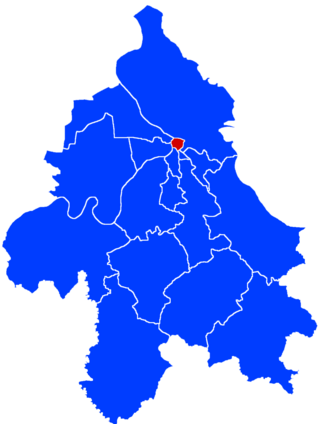
Stari Grad is a municipality of the city of Belgrade. It encompasses some of the oldest sections of urban Belgrade, thus the name. Stari Grad is one of the three municipalities that occupy the very center of Belgrade, together with Savski Venac and Vračar.

Great War Island is a river island in Belgrade, capital of Serbia. It is located at the confluence of the Sava and Danube rivers. Though uninhabited, the island is part of the Belgrade City proper, and belongs to the city municipality of Zemun.

Dorćol is an affluent urban neighborhood of Belgrade, the capital of Serbia. It is located in Belgrade's municipality of Stari Grad.

Krnjača is an urban neighborhood of Belgrade, the capital of Serbia. It is located in Belgrade's municipality of Palilula.

Savamala is an urban neighborhood of Belgrade, the capital of Serbia. It is located in Belgrade's municipalities of Savski Venac and Stari Grad.
Bara Venecija is an urban neighborhood of Belgrade, the capital of Serbia. It is located in Belgrade's municipality of Savski Venac, along the right bank of the Sava river.

Kosančićev Venac is an urban neighborhood of Belgrade, the capital of Serbia. It is located in Belgrade's municipality of Stari Grad. It has been described as the most valuable and most representative veduta of Belgrade. In 1971, it was declared a spatial cultural-historical unit and placed under legal protection.

The Serbian River Flotilla is a tactical brigade-level brown water naval branch subordinated to the Serbian Army of the Serbian Armed Forces. Patroling on the Danube, Sava, and Tisa rivers, it is tasked with environmental policing, counter-terrorism, and border security along country's international river borders.
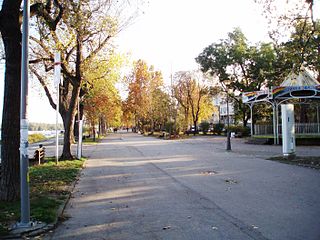
Zemunski Kej is an urban neighborhood of Belgrade, the capital of Serbia. It is located in Belgrade's municipality of Zemun.

The Yugoslav monitor Sava is a Temes-class river monitor that was built for the Austro-Hungarian Navy as SMS Bodrog. She fired the first shots of World War I just after 01:00 on 29 July 1914, when she and two other monitors shelled Serbian defences near Belgrade. She was part of the Danube Flotilla, and fought the Serbian and Romanian armies from Belgrade to the mouth of the Danube. In the closing stages of the war, she was the last monitor to withdraw towards Budapest, but was captured by the Serbs when she grounded on a sandbank downstream from Belgrade. After the war, she was transferred to the newly created Kingdom of Serbs, Croats and Slovenes, and renamed Sava. She remained in service throughout the interwar period, although budget restrictions meant she was not always in full commission.

Vardar was a Sava-class river monitor built for the Austro-Hungarian Navy as SMS Bosna, but was renamed SMS Temes (II) before she went into service. During World War I, she was the flagship of the Danube Flotilla, and fought the Serbian Army, the Romanian Navy and Army, and the French Army. She reverted to the name Bosna in May 1917, after the original SMS Temes was raised and returned to service. After brief service with the Hungarian People's Republic at the end of the war, she was transferred to the newly created Kingdom of Serbs, Croats and Slovenes, and renamed Vardar. She remained in service throughout the interwar period, although budget restrictions meant she was not always in full commission.

SMS Körös was the name ship of the Körös-class river monitors built for the Austro-Hungarian Navy. Completed in 1892, the ship was part of the Danube Flotilla, and fought various Allied forces from Belgrade down the Danube to the Black Sea during World War I. After brief service with the Hungarian People's Republic at the end of the war, she was transferred to the newly created Kingdom of Serbs, Croats, and Slovenes, and renamed Morava. She remained in service throughout the interwar period, although budget restrictions meant she was not always in full commission.
Ignjat Kirhner was an Austro-Hungarian officer, Serbian World War I volunteer, and Yugoslav brigadier-general. He deserted the Austro-Hungarian Army by the start of World War I and joined the Royal Serbian Army as a guerrilla fighter in the Belgrade area. After the war he rose in the Royal Yugoslav Army to the rank of brigadier-general.

Belgrade, the capital of Serbia, is located on two major rivers, the Danube and the Sava which are spanned by 11 bridges in total.
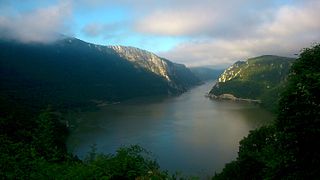
The Sip Canal was a ship canal on the Danube, in eastern Serbia. It was constructed as part of a massive international effort to make the navigation through the most dangerous sections of the Iron Gates gorge safer and easier. Open in 1896, with participation of three royal heads of state, the Sip Canal was flooded in 1969 when the artificial Đerdap Lake was formed after the dam of the Iron Gate I Hydroelectric Power Station on the Danube was built. In terms of navigation, it was the most important of all 7 canals cut through the gorge.
The history of the Serbian River Flotilla dates back to early 20th century, although its precursors originates as early as 16th century.
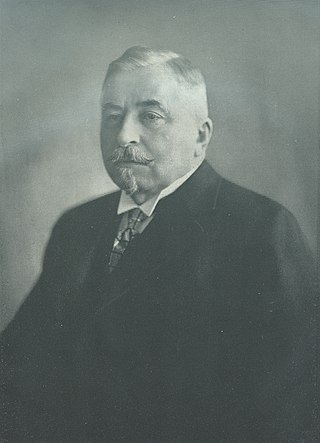
Miloš Savčić was a Serbian politician, businessman, engineer, banker and entrepreneur who was one of the richest Europeans of his time. Savčić served as Minister of Construction, Mayor of Belgrade, advisor, and manager of numerous economic facilities in the Kingdom of Serbia and the Kingdom of Yugoslavia. He is considered to be one of the most influential Serbs of his time.
















